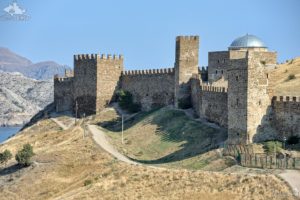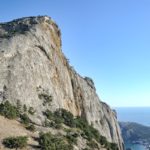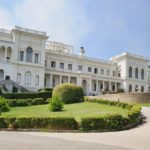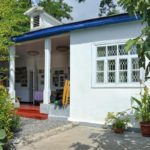The Genoese fortress in Sudak is one of the most significant and famous sights of the Crimea. It stands on an ancient fossilized coral reef that has risen over the millions of years from the sea to a height of more than 150 meters. The slopes of the Fortress Mountain are only half-covered with grass, and the rest are ancient bare stones, on which the ramparts stand. There are 14 towers of the outer line of defense, and four of the inner one. The walls and tower battlements still look solid and impressive, although their construction was carried out in the period from 1371.
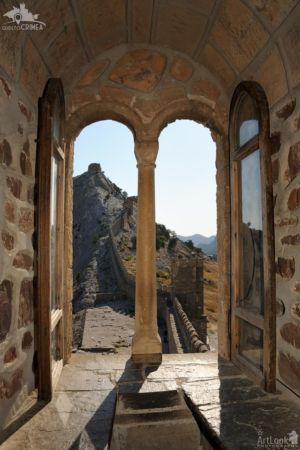
Story of Sudak Fortress
There are many moments in history when it is fortifications that become famous architectural attractions and are preserved for centuries. Sudak Fortress is one of them. The bay of Sudak city, protected on three sides from the mainland winds by the mountains, today is famous for a record number of warm and sunny days per year (there are even more of them here than in Nice), but earlier it was the intersection of major trade routes, including seafaring. It was from here that the Golden Coast of Crimea (or south, South Coast) began (and begins now). Therefore, Sudak was an incredibly significant point on the map. In 1370, it was still called Sugdeya or Soldaya and really belonged to the Genoese, the colonialists from Genoa, the North Italian trading republic of the High Middle Ages. Construction lasted almost 100 years, and during this time more than 15 consuls were replaced. Until now, each tower in the defensive line bears the name of the consul at which it was built.
Museum of the Crimean Citadel today
The exposition available for visiting includes:
- Consular Towers (it is interesting that they were built with only three walls) with preserved heraldic slabs perpetuating the names of the noble Italians who ruled the fortress;
- The Main Gate (they were also used as a trap, since there was a “pocket” and fortifications inside, towers with loopholes for shelling);
- Observation Towers up to 15 meters high – Portovaya (Port Tower) and Dozornaya (Watch Tower);
- High Consular Castle with internal elements;
- Excavation sites and cisterns, underground water tanks (at that time, despite the highlands and proximity of the sea, there was a water supply here);
- Temple with an Arcade;
- The active Orthodox church of St. Paraskeva.
On a sightseeing tour, you will learn why one main tower is called Maiden’s, you can walk along mountain trails and imagine how glorious knights lived inside (and later – Russian security garrisons). On the territory, there is a museum located in a temple with an arcade. It stores artifacts from local excavations. Surprisingly, the consular castle of the 13th century was also perfectly preserved: inside you can see the fireplace and stairs, look at the sun and the sea through the narrow loopholes. The entire exposition (the inner space of the Genoese fortress) occupies almost 30 hectares. The place is so atmospheric and unusual that some of the Masters and Margarita series were filmed here, as well as famous Russian films about pirates. Every year in the summer they provide in Sudak Fortress a festival of reenactors “Genoese Helmet”: for “Siege of the City” and fights with swords “Knights” come from all over the world!
Photographs from the Tour
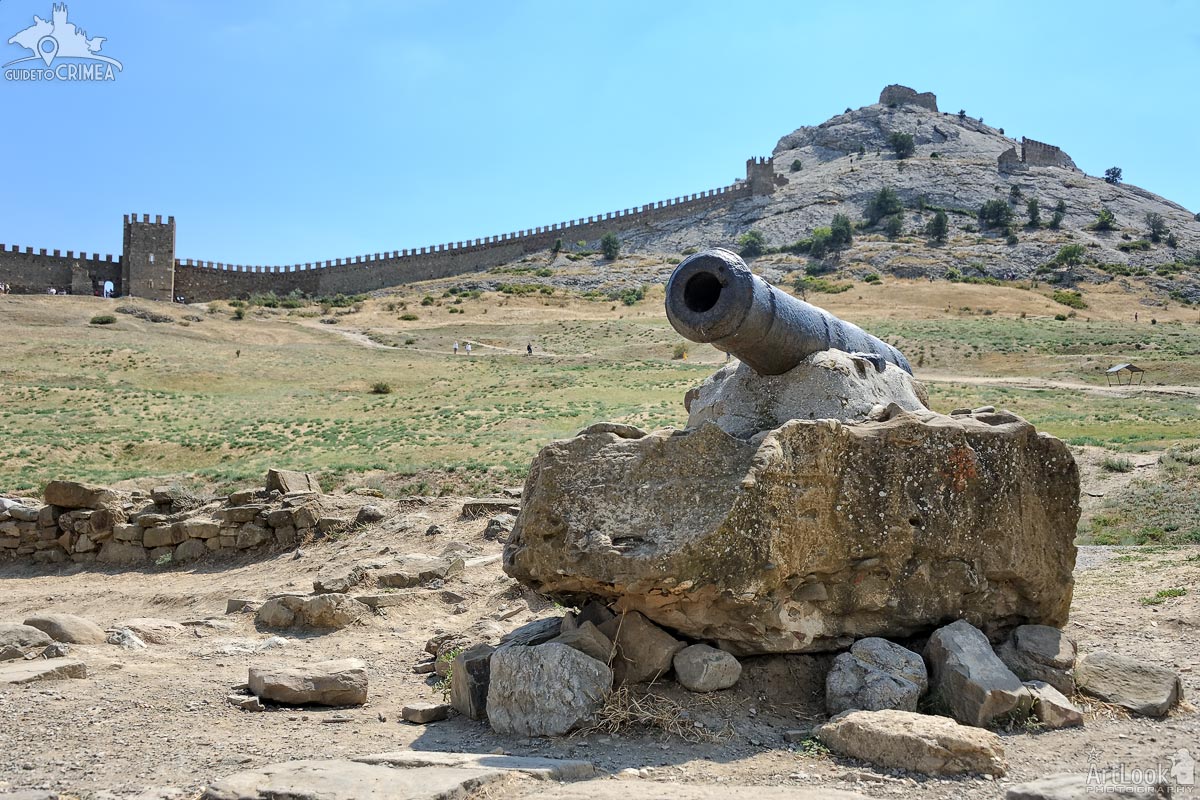
Old cast-iron 19th-century Russian naval cannon in the background of fortifications on the Fortress Mount Dzhenevez-Kaya (Crimean Tat. Cenevez Qaya). It is the gun from a sunken Russian frigate, which was shot down by two English battleships in 1854 during the Crimean War. The naval cannon was installed on the grounds of the Genoese fortress in Sudak on the site of the ruined "Cyril barracks" built by order of Prince Grigory Potemkin.
Photo #016 taken on August 11, 2019 during tour of Sudak Fortress with my dear clients from Hong Kong, Esther and Ricky on the 1st day of the adventure trip “Discovering Crimea in 6 Days”.
| Album | Genoese Fortress in Sudak |
| Taken | August 11, 2019 |
| Uploaded | November 10, 2019 |
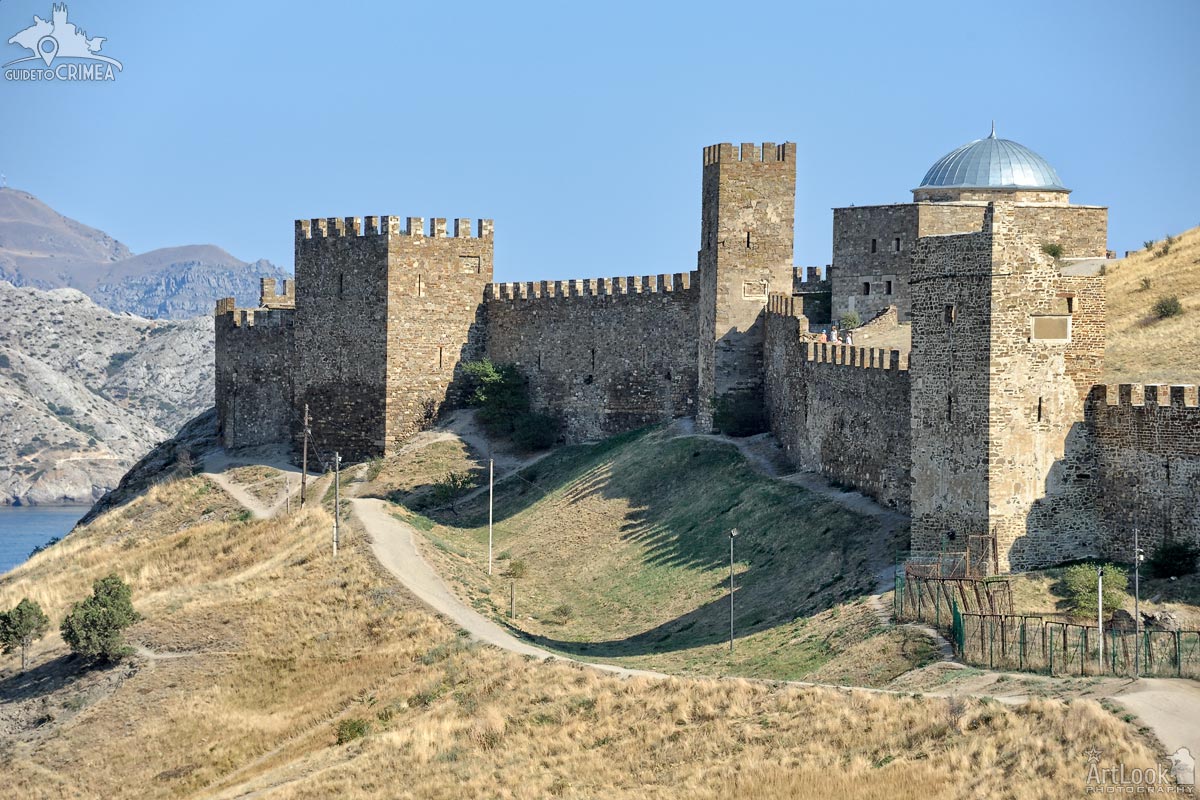
View from hotel Romantik on the ancient walls and towers built between 1371 and 1469 by Genoese as a stronghold of Soldayya (Sudak) colony. A silver dome of the Temple with Arcade can be seen behind the fortress walls.
Photo #113 taken on August 11, 2019 during hiking tour on the peak of Sokol mountain with my dear clients from Hong Kong, Esther and Ricky (1st day of the adventure trip “Discovering Crimea within 6 Days”)
| Album | Genoese Fortress in Sudak |
| Category | Architectural |
| Taken | August 11, 2019 |
| Uploaded | October 14, 2019 |

The view from a third-story window of Consular Castle of Genoese of fortification walls stretching along a mountain on the Black Sea coast. This 14th-century castle is located in the eastern part of the citadel of Genoese Soldaia, the former name of Sudak fortress given by the Venetians in the 13th century. The fortress was ceded to Genoese control by the Venetians in 1365. The Genoese Fortress and Consular Castle in Sudak (Soldaia) in the eastern part of Crimea (Crimean Peninsula) is a splendid example of Italian architecture.
Photo #314 taken on August 27, 2015 in Sudak Fortress, Travelling around Crimea.
| Album | Genoese Fortress in Sudak |
| Category | Architectural |
| Taken | August 27, 2015 |
| Uploaded | October 7, 2019 |
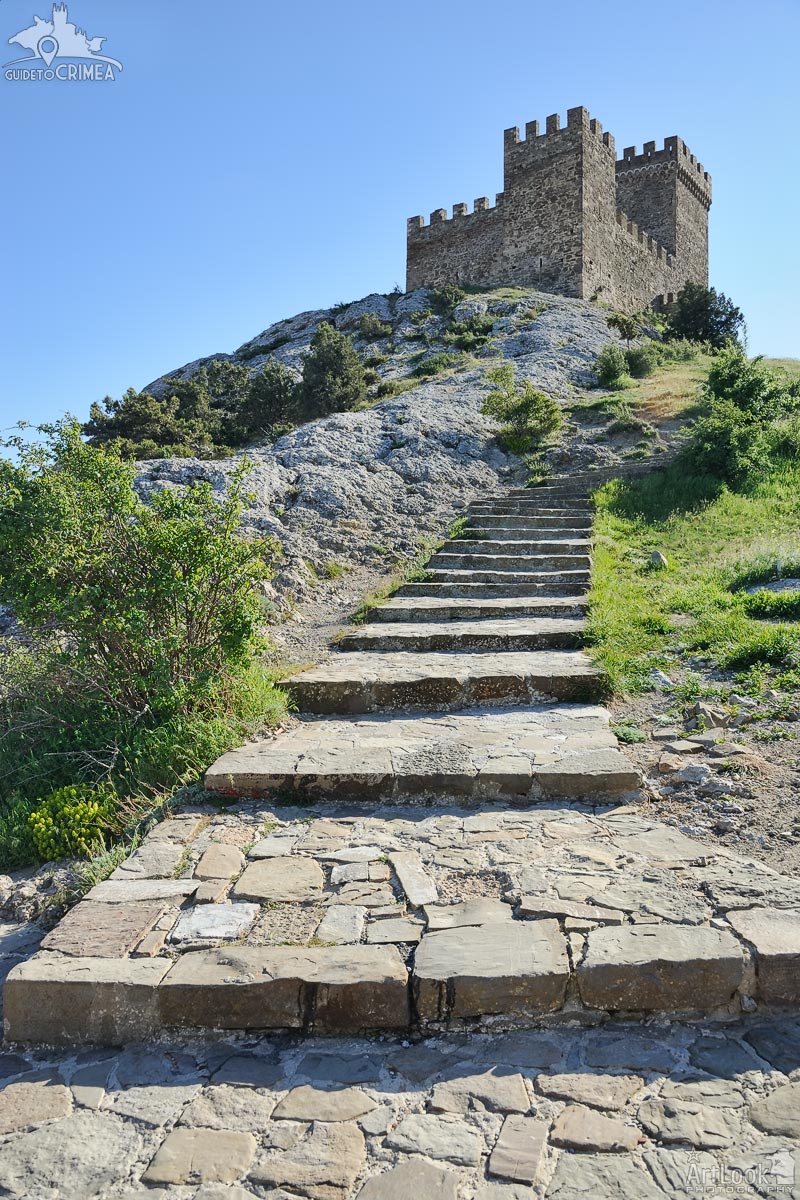
Ancient stone steps to the upper level of the Genoese fortress of Sudak consisting of Consular castle and four neighboring towers connected by walls. The fortress situated on an ancient coral reef – a conical mountain called Kyz-Kulle-Burun was built between 1371 and 1469 by Genoeses as a stronghold of Soldayya (Sudak) colony, about 55 km from ancient Caffa(Feodosiya).
Photo #255 taken on April 30, 2017
| Album | Genoese Fortress in Sudak |
| Category | Architectural |
| Taken | April 30, 2017 |
| Uploaded | October 7, 2019 |

Old cast-iron 19th-century Russian naval cannon in the background of fortifications on the Fortress Mount Dzhenevez-Kaya (Crimean Tat. Cenevez Qaya). It is the gun from a sunken Russian frigate, which was shot down by two English battleships in 1854 during the Crimean War. The naval cannon was installed on the grounds of the Genoese fortress in Sudak on the site of the ruined "Cyril barracks" built by order of Prince Grigory Potemkin.
Photo #016 taken on August 11, 2019 during tour of Sudak Fortress with my dear clients from Hong Kong, Esther and Ricky on the 1st day of the adventure trip “Discovering Crimea in 6 Days”.
| Album | Genoese Fortress in Sudak |
| Taken | August 11, 2019 |
| Uploaded | November 10, 2019 |

View from hotel Romantik on the ancient walls and towers built between 1371 and 1469 by Genoese as a stronghold of Soldayya (Sudak) colony. A silver dome of the Temple with Arcade can be seen behind the fortress walls.
Photo #113 taken on August 11, 2019 during hiking tour on the peak of Sokol mountain with my dear clients from Hong Kong, Esther and Ricky (1st day of the adventure trip “Discovering Crimea within 6 Days”)
| Album | Genoese Fortress in Sudak |
| Category | Architectural |
| Taken | August 11, 2019 |
| Uploaded | October 14, 2019 |
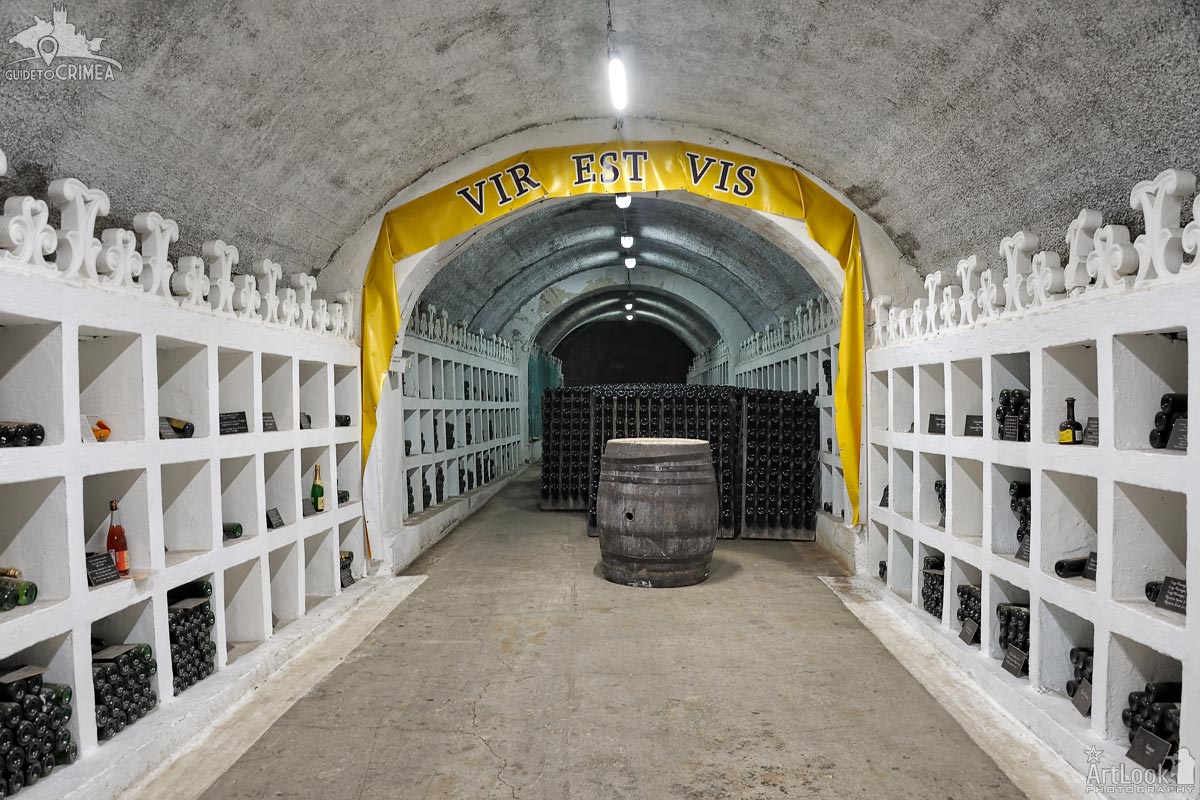
Interior of Enoteca of Novy Svet Winery, the repository of elite sparkling wines, in one of the old tunnels cut in the monolith of Koba-Kaya Mountain (Mount Orel, Eagle) at the end of 19th – beginning of 20th century. In the tunnel is hanging the yellow banner with the words Vir, Est, Vis (“It was. It is. It will be.”) from the coat of arms of Golitsyn family. Several tunnels were constructed below the sea level, so it helps to maintain permanent temperature of 8-12 degrees necessary for aging. The old tunnel cellars are in perfect condition, and most of them are used by the Novy Svet Winery even today.
Photo #278 taken on August 12, 2019 during Champaigne Factory tour in Novy Svet on the 2nd day of the adventure trip “Discovering Crimea in 6 Days” with my dear clients from Hong Kong, Esther and Ricky.
| Album | Novy Svet Champagne Factory |
| Taken | August 12, 2019 |
| Uploaded | October 13, 2019 |
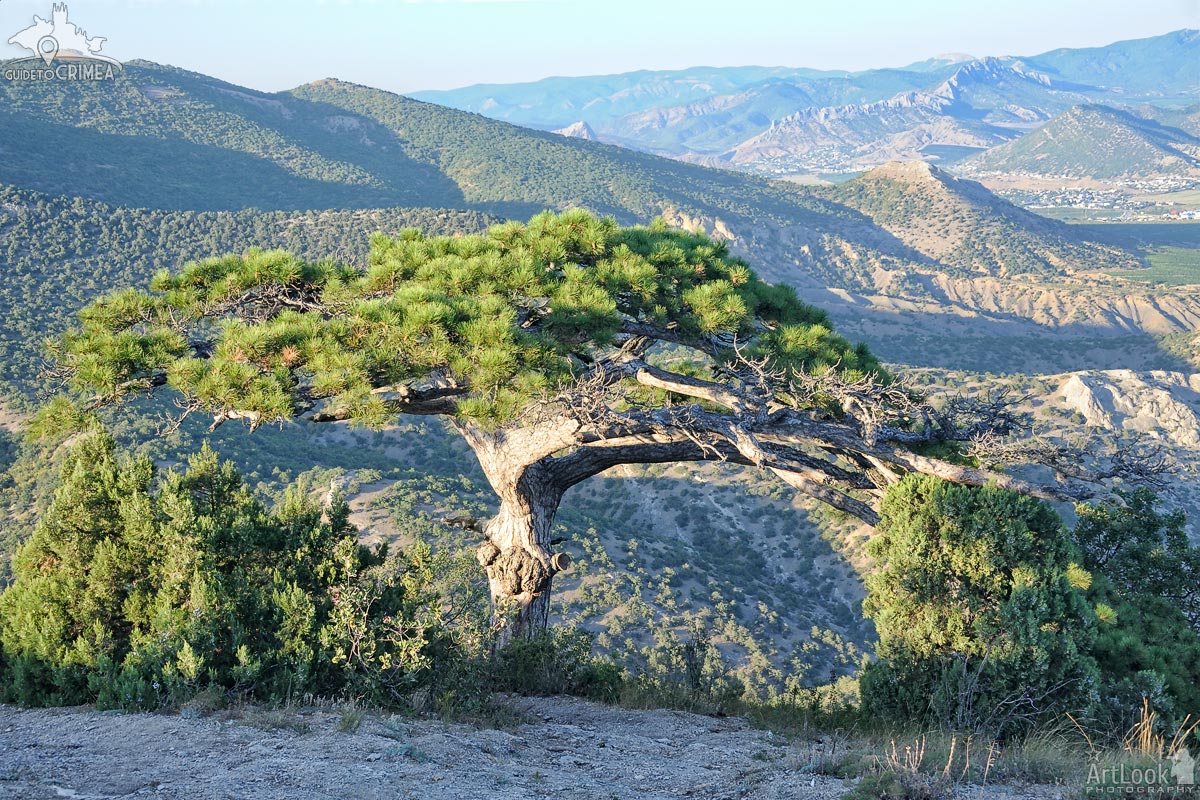
The big Sudak pine on the slope of Sokol Mountain (Falcon Mountain) in Novy Svet in the background of the mountain range in Sudak district. The tree is used by people who climb on the mount as an object of wishes and offerings. This type of trees in Sudak was called Stankevich pine by the name of famous Russian botanist who found and described it in 1906.
Photo #384 taken on August 31, 2015
| Album | Mount Falcon (Kush-Kaya) in Novy Svet |
| Category | Landscapes |
| Taken | August 31, 2015 |
| Uploaded | October 10, 2019 |
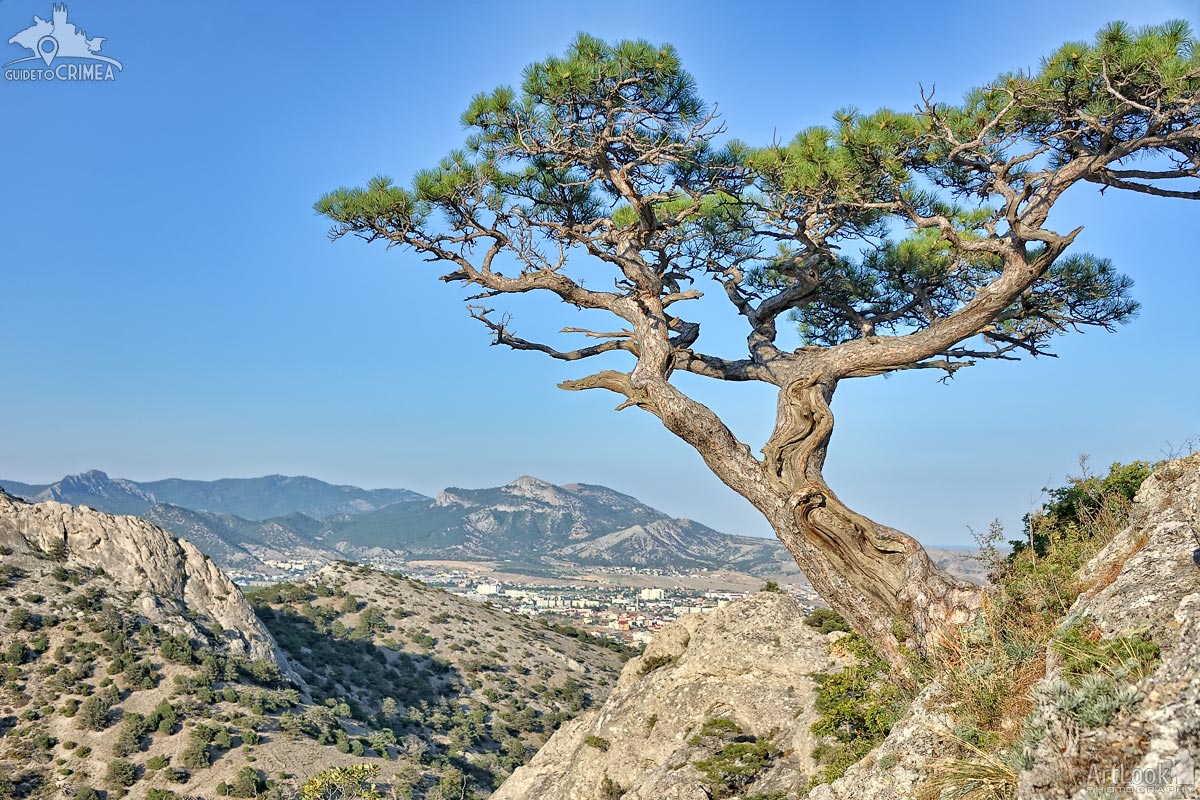
Beautiful Stankevich pine tree growing on a steep slope of Sokol (Falcon) mountain in background of a valley where located Sudak city. Such pine trees are very rare in nature, but they are endemic to the Sudak district on the southern coast of the Crimea peninsula. First described by the Russian botanist V.N. Stankevich, the pines were named by the academic V. N. Sukachev in 1906 in his honor. They are also known as “Sudak Pines”- after the region in which they are found.
Photo #149 taken on August 11, 2019 during hiking tour on the peak of Sokol mountain with my dear clients from Hong Kong, Esther and Ricky (1st day of the adventure trip “Discovering Crimea within 6 Days”)
| Album | Mount Falcon (Kush-Kaya) in Novy Svet |
| Category | Landscapes |
| Taken | August 11, 2019 |
| Uploaded | October 10, 2019 |
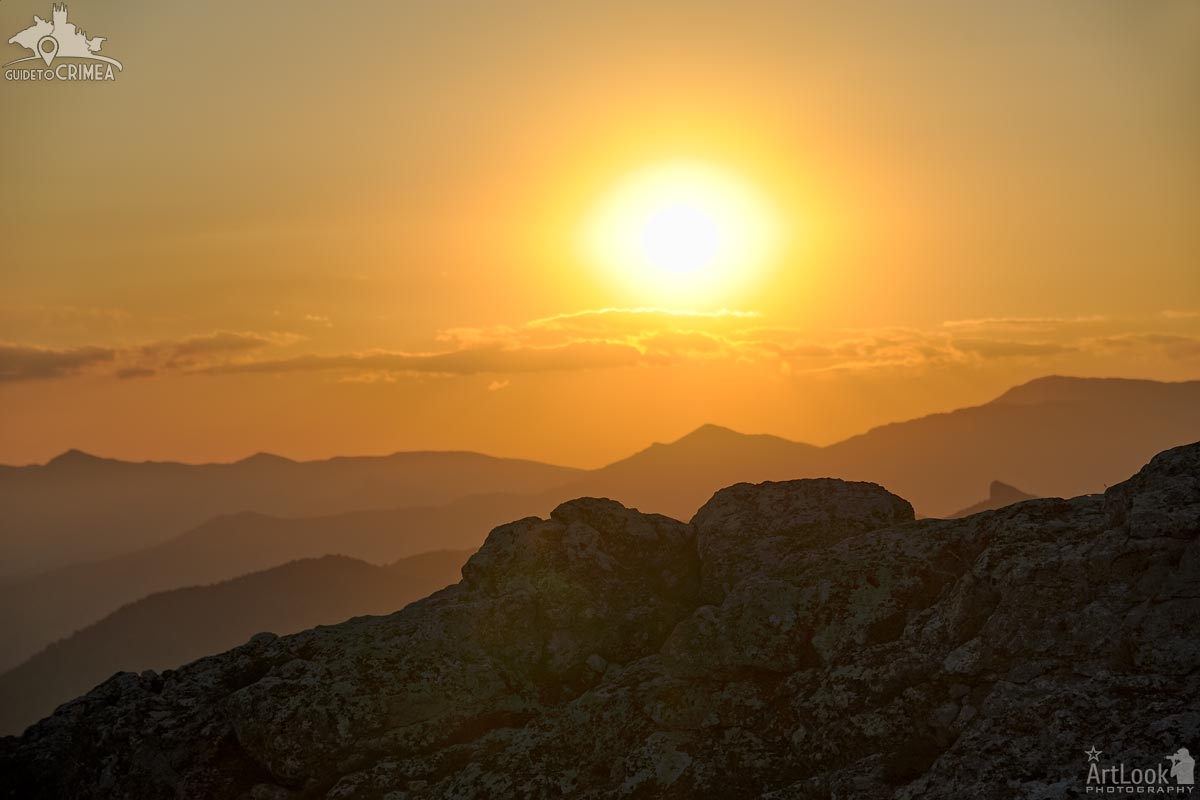
Overview beautiful sunset over Crimean Mountains from the peak of Sokol (Falcon) mountain (about 470 meters from a sea level) at Novy Svet, few kilometers from Sudak, the Sothern shore of Crimean Peninsula.
Photo #208 taken on August 11, 2019 during hiking tour on the peak of Sokol mountain with my dear clients from Hong Kong, Esther and Ricky (1st day of the adventure trip “Discovering Crimea within 6 Days”)
| Album | Mount Falcon (Kush-Kaya) in Novy Svet |
| Category | Landscapes |
| Taken | August 11, 2019 |
| Uploaded | October 10, 2019 |

The view from a third-story window of Consular Castle of Genoese of fortification walls stretching along a mountain on the Black Sea coast. This 14th-century castle is located in the eastern part of the citadel of Genoese Soldaia, the former name of Sudak fortress given by the Venetians in the 13th century. The fortress was ceded to Genoese control by the Venetians in 1365. The Genoese Fortress and Consular Castle in Sudak (Soldaia) in the eastern part of Crimea (Crimean Peninsula) is a splendid example of Italian architecture.
Photo #314 taken on August 27, 2015 in Sudak Fortress, Travelling around Crimea.
| Album | Genoese Fortress in Sudak |
| Category | Architectural |
| Taken | August 27, 2015 |
| Uploaded | October 7, 2019 |

Ancient stone steps to the upper level of the Genoese fortress of Sudak consisting of Consular castle and four neighboring towers connected by walls. The fortress situated on an ancient coral reef – a conical mountain called Kyz-Kulle-Burun was built between 1371 and 1469 by Genoeses as a stronghold of Soldayya (Sudak) colony, about 55 km from ancient Caffa(Feodosiya).
Photo #255 taken on April 30, 2017
| Album | Genoese Fortress in Sudak |
| Category | Architectural |
| Taken | April 30, 2017 |
| Uploaded | October 7, 2019 |
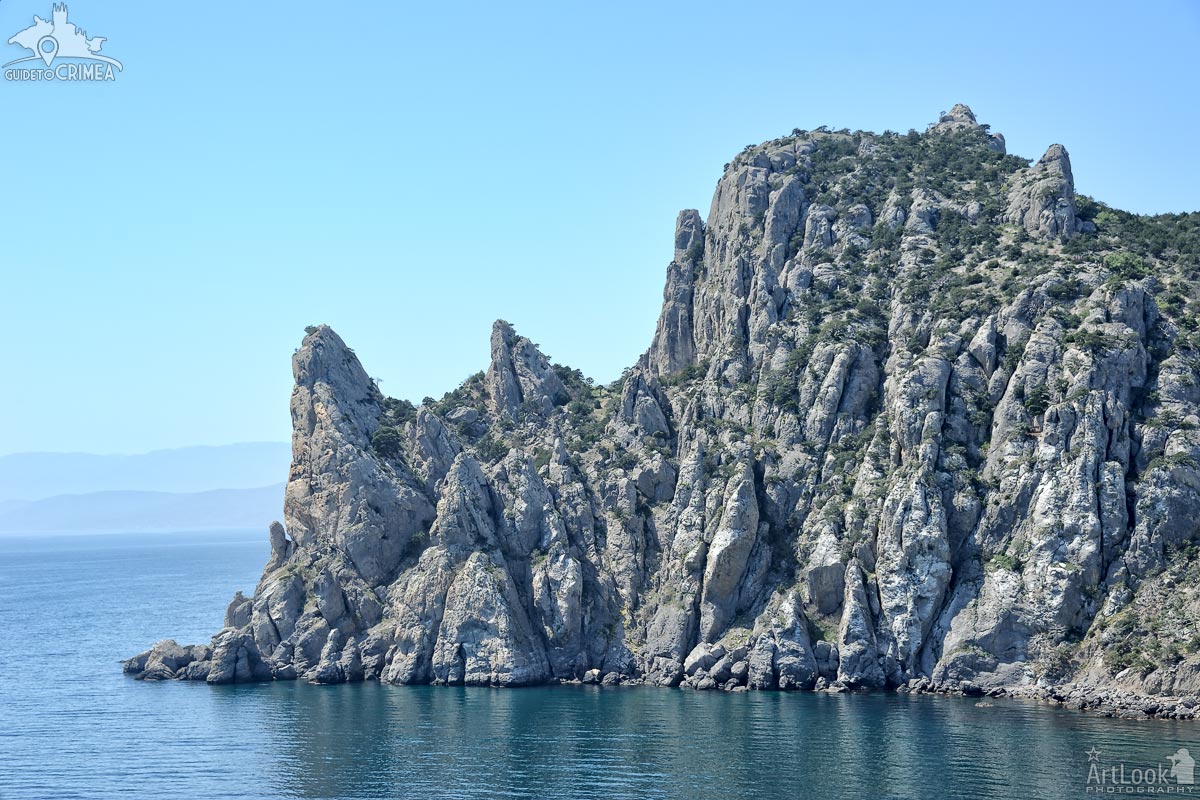
The view on the edge of the ancient coral reef of the Jurassic period, the mount Karaul-Oba (Tatar: Qaravul Oba, Russian: Karaulnaya), from Cape Kapchik, located a few kilometers westwards from Novy Svet (New World) settlement, on the tourist path of Golitsyn. The Karaul-Oba massif with its mystic rocky ledges is the state complex natural monument. Almost from the very sea, sharp teeth of the cliffs are jutting out, that is a distinctive feature of the mountain. ‘Karaul-Oba’ means ‘Watch Mountain’ or ‘Guard Peak’ in Crimean Tatar. It is reckoned among many unique natural wonders of Sudak’s surroundings.
Photo #079 taken on May 01, 2017
| Album | Golitsyn Trail in Novy Svet |
| Category | Landscapes |
| Taken | May 1, 2017 |
| Uploaded | October 7, 2019 |
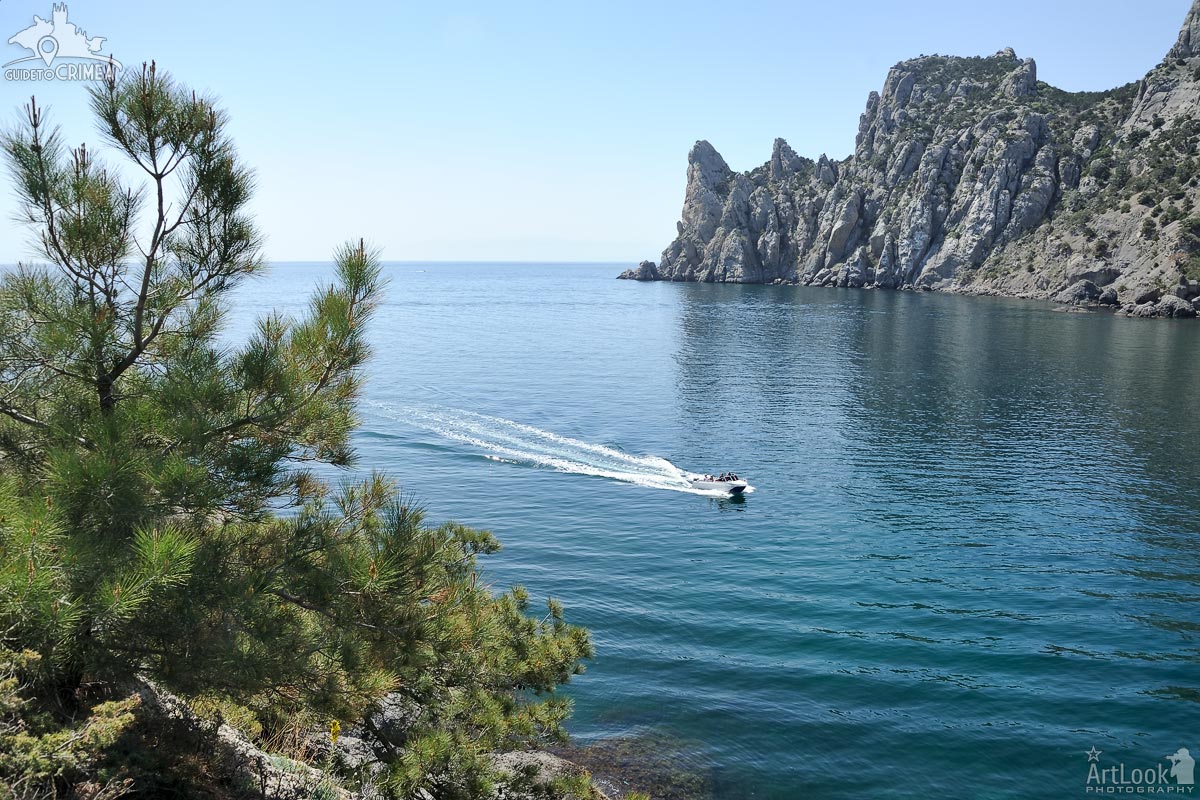
View of a boat with tourists entering the Blue Bay (Golubaya Buhta) in Novy Svet (New World), where located the famous Tsar beach in Suzdak district in Crimea. The sharp teeth of the cliffs of the mount Karaul-Oba (Tatar: Qaravul Oba, Russian: Karaulnaya) are in the background of the picture. This ancient 341-meter-high coral reef of the Jurassic period (341 m.) has rather a complicated specific structure: plateau-like area with rock walls, crevices, ridges, stone labyrinths are replaced by deep long saddles. The rocky ledges of Karaul-Oba massif is a State complex natural monument and reckoned among many unique natural wonders of Sudak’s surroundings.
Photo #095 taken on May 01, 2017
| Album | Golitsyn Trail in Novy Svet |
| Category | Landscapes |
| Taken | May 1, 2017 |
| Uploaded | October 7, 2019 |
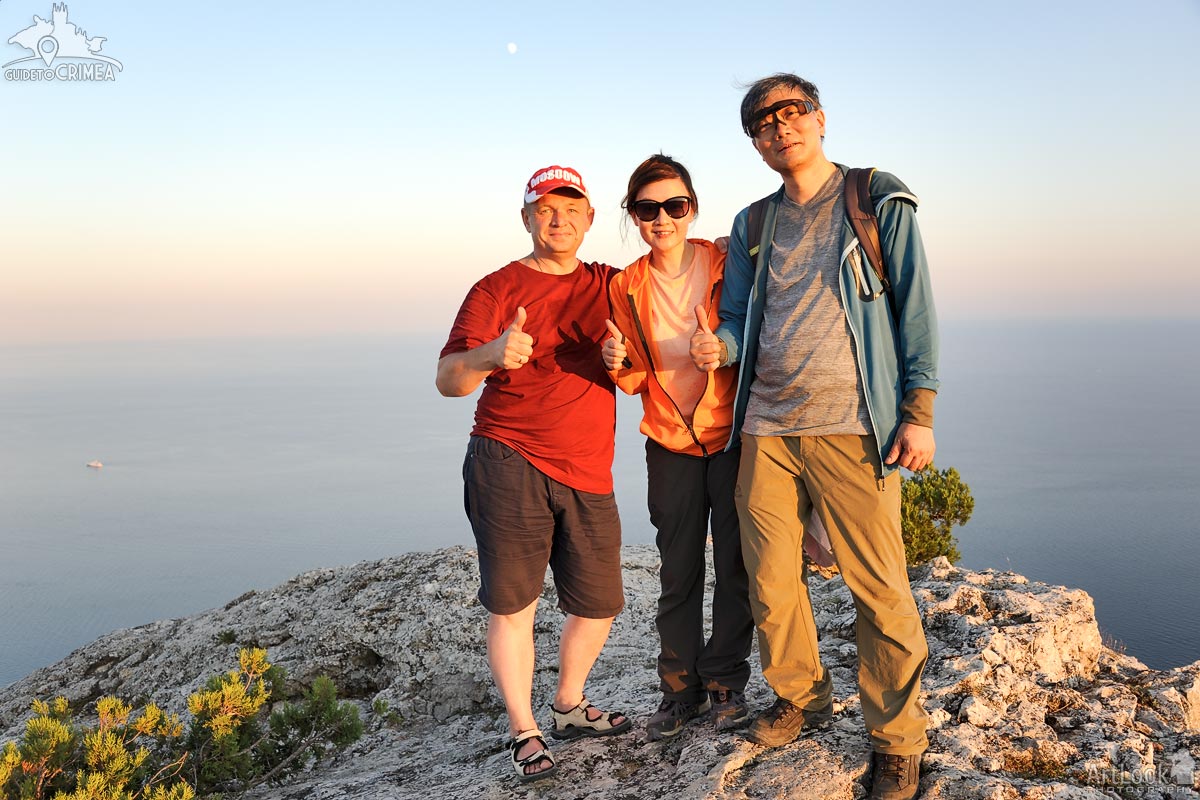
Memory photo of me, Arthur Lookyanov, and my clients and friends from Hong Kong, Esther and Ricky, standing on the peak of Sokol (Falcon) Mountain in Novy Svet (New World). The picture was taken on my camera by our local guide in Sudak after 2,5 hours climbing on the mount.
Photo #202 taken on August 11, 2019 during a hiking tour in Novy Svet on the 1st day of the adventure trip “Discovering Crimea in 6 Days”.
